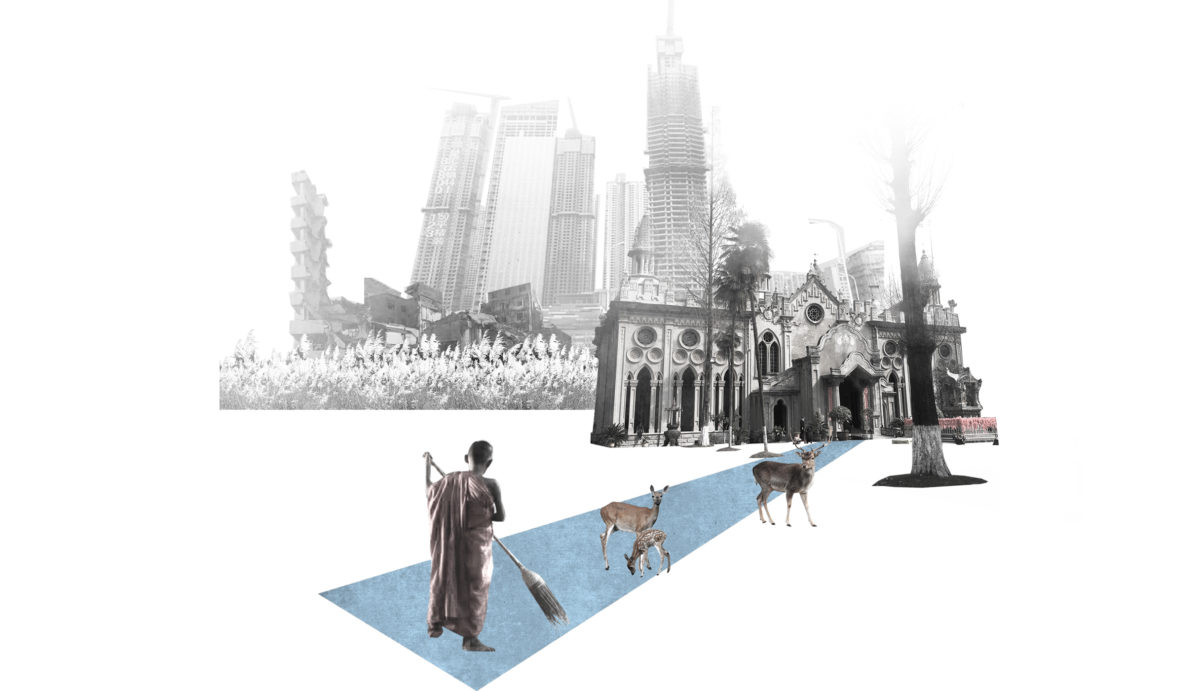“To Play or To Kill” – German translation of Constant’s anthology De opstand van de Homo Ludens: “Spielen oder Toten.”
This research is built on the interest about the idea “space of exception” as the concept be utilized in radical architecture works. From the work of Giorgio Agamben, the term state of exception is defined as the place “production of new norms(or of a new juridical order)”<1>, which are mostly under the influence and control of political gesture and law. The order, law and juridical norms in these places are blurred and undecidable. As a consequence, the state of exception is seen as “the opening of a fictitious lacuna”<2> which is able to provide the environment in an extreme situation to test the different order and force. While observing this kind of heterogeneity space in this scenario, the architecture as the event holder also presents the potentiality of exception by exploring the power and metaphor of architectural elements. One example of using architecture as the tool to present the power and accumulate ideology could be the work Exodus or the voluntary prisoner of architecture by Rem Koolhaas. In this work, the architectural wall is the representation of exceptions based on his research from the Berlin Wall phenomenon. Quote from him, “the wall swelled to assume its maximum identity wherever possible, but along more than half its length, its regularity was compromised in a series of systematic adaptations that accommodate existing urban incidents or dimensional conflicts.”<3> The architectural elements here are defined beyond the physical space to the generator of people behaviour which is out of the regular norm. The presented possibilities in this expanded notion of architecture space provide a direction to rethinking the system and the meaning of the architecture. Hence, this research wants to challenge the traditional concept of architecture as the space of habit, to question how architecture could be treated as the incubator of ideology and what could be possibilities to open the architecture functions to serve the alternative imagination of the world.
Architecture as Assembly System
Objects with Metaphor
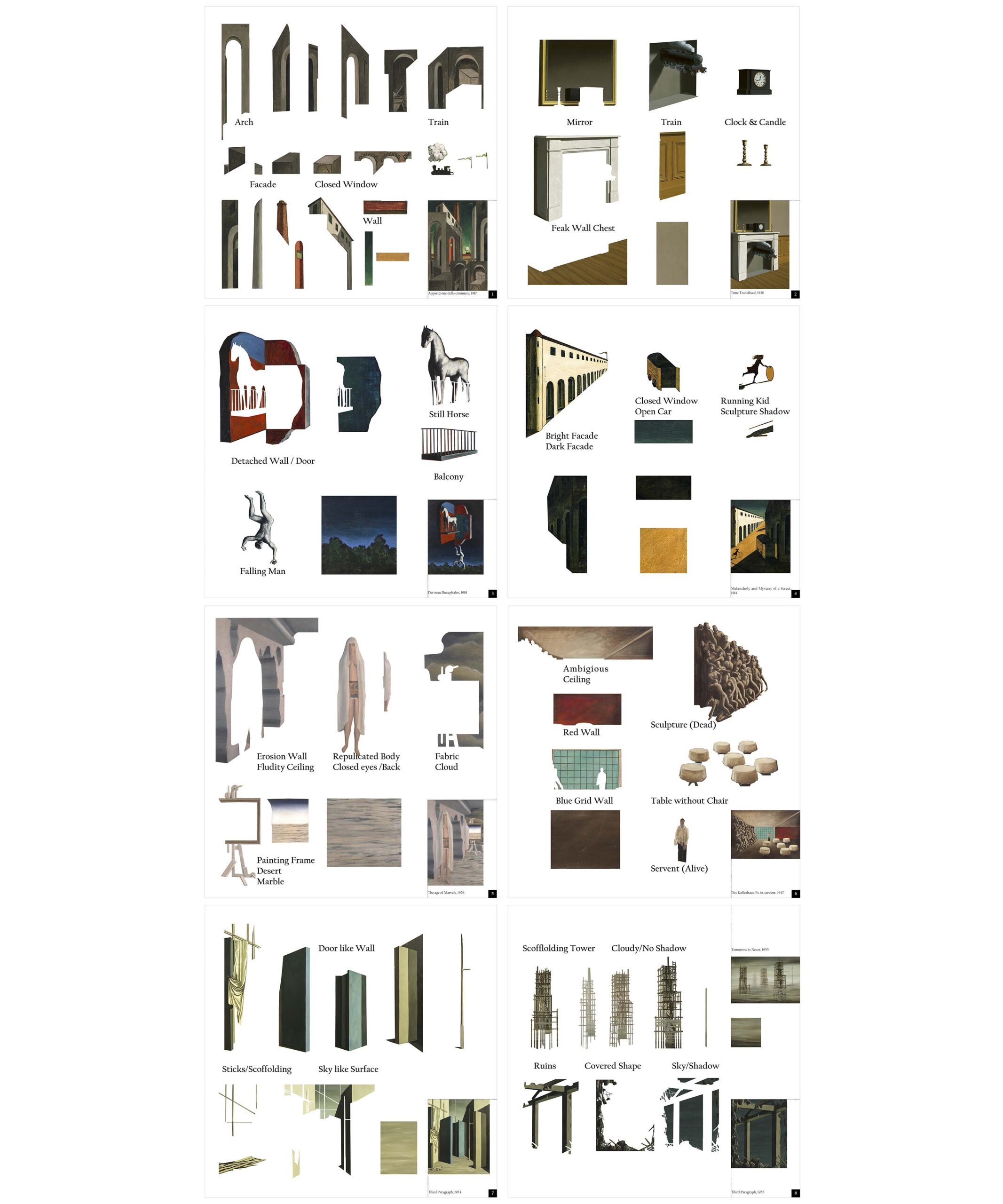
The focusing example in terms of imagination crafting is surrealism paintings. This research gathers paintings which could follow under two categories, one is presenting a careful assembly for a narrative spatiality, and second is utilizing the metaphor of architectural elements for the storytelling. The selected painters include Giorgio de Chirico, Kay Sage, Rene Magritte and Edgar Ende.
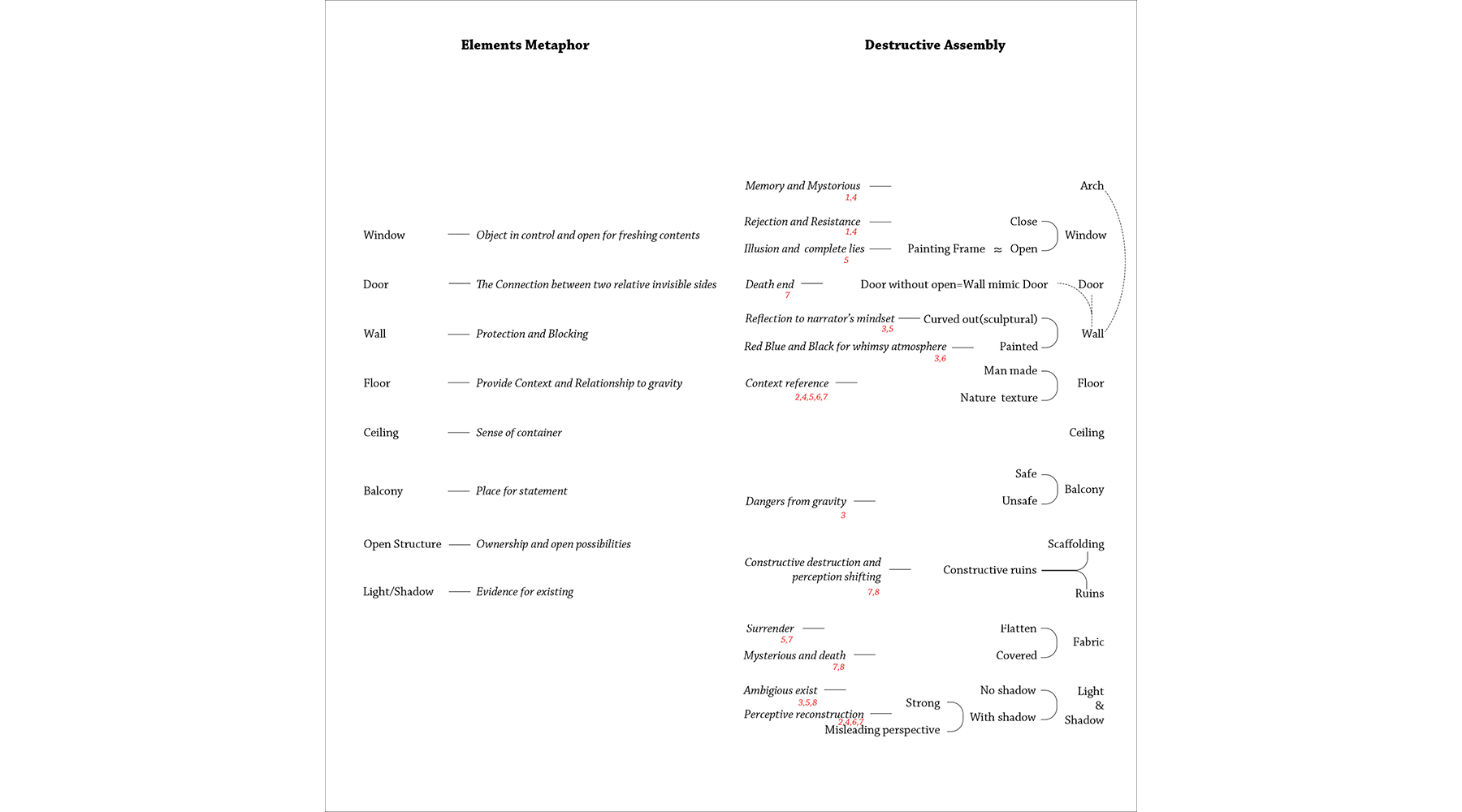
In the real world, some architectural elements would be intentionally selected to represent and emphasize their metaphor as power. This scenario is always in the form of physically as well as subjectivity, which could either be symbolic appearance or merely through the name definition.

The examples include the Berlin Wall(Germany), Great Wall of China(China), Arc de Triomphe(France), and Gateway Arch (U.S.). The large scale and dimensions of these projects start to present an alternative understanding of the reference architectural objects. They provide a potential space inside of the single elements which are the escape of common standard. With the camouflage cover, this self-extended space illustrates the world of “another” and always as a holder of a time-specific ideology. And they are the departure where architectural bodies hold dual personalities that follow the logic of real construction systems but simultaneously beyond the functional limitation to where space-topia and metaphor bond together.
Architecture as Exception
Established on the fundamental functional purpose, geometry aesthetic and respect to cosmos, the architecture assembly standard could just follow the trend of cultural development and stay as silent. However, as architects started to realize architecture could present its power through utilizing and expanding the metaphor of architectural elements, the initial common sense of architecture began to stretch its shapes, break and open to wider exploration for the inside contents. The process to freedom of architectural critical thinking slowly divides architecture practice and academics, or in another world, they are pushing each other but not at the same speed. The constraints provided by building environments like economic factors and client opinions decrease the provoked feedback from architects, however, architects turn around their heads to the academic discipline as their resistance and generate their own voices. The self-generated architectures representing the architect’s thoughts for the response of the social environment later in the 1960s are defined as Radical Architecture. Although this term kind of fading away in the history as architecture disciplines tired of calling it, it’s raising awareness that architecture not only presents the common rules of the living world about also to be seen as the tool to generate the space of exception for changeling public imagination and raise discussions.
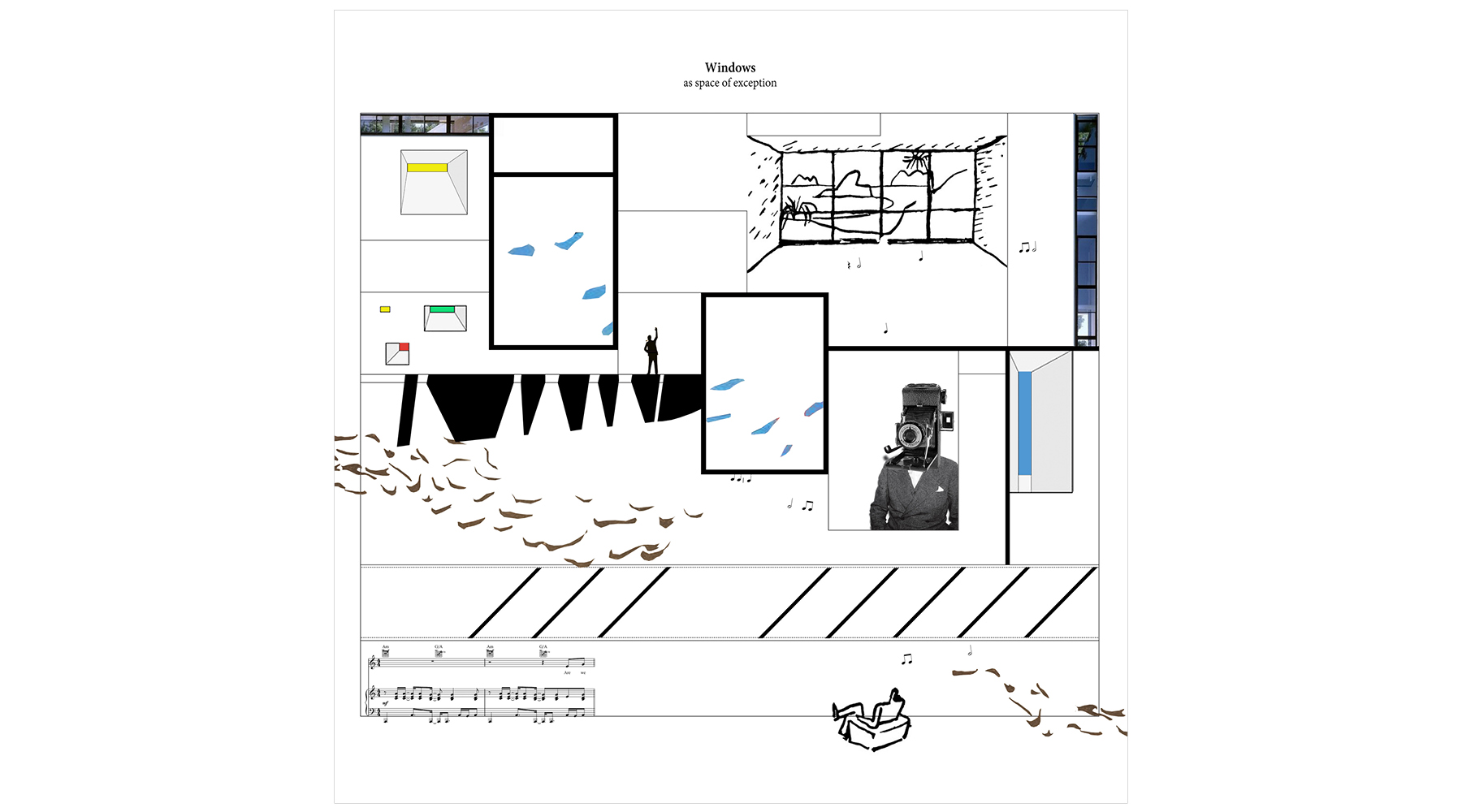
Window: as space where the boundary of inside and outside is broke.
The context in two opposite environments and information flow and mixed together. (Le Corbusier)

Roof: the exception of the architecture as its invisible for the outsider, but boundless visual and maximum event possibilities to the insider. (Le Corbusier)

Mirror: the location of heterotopia, which could reflect the real context but simultaneously contains another world, which the world inside of the mirrors is imagined as to the union space, that the mirror is the gate to the fantasy land. (Superstudio)

Floor: the place of homogeneity, where everything could land and contains. Meanwhile, the floor is the useful side of the “slab”, the covered layer of the thickness and the representation of the reverse world – ceiling. (Superstudio)

Door: the representation of entering, which instead the wall is the physical form divide the space, the door is the signal of any invisible division. (Constant)
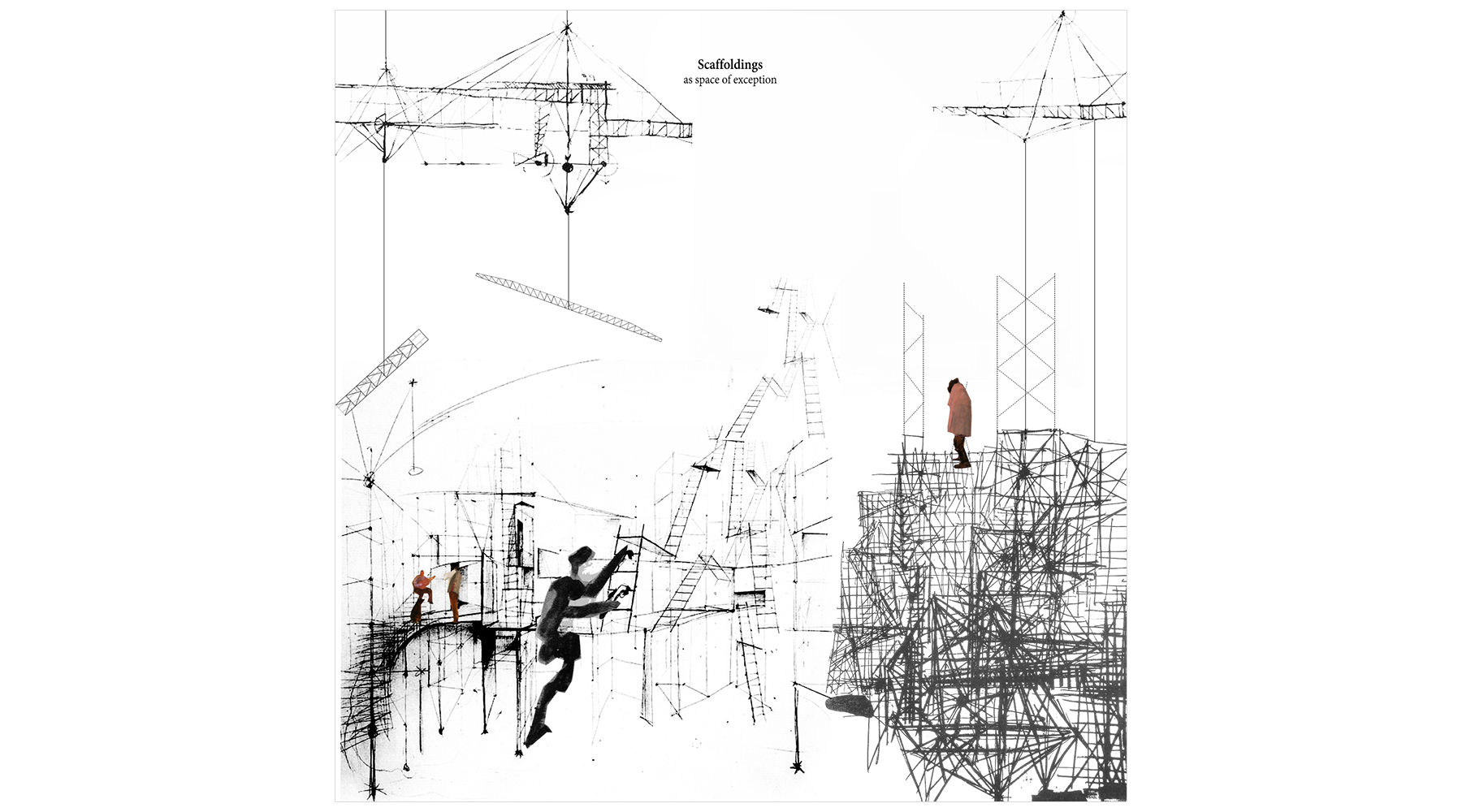
Scaffolding: as space could be continually be built under deconstruction and reconstruction, where the single form holds the maximum scaling possibilities, event creativity, and cultural argument. (Constant)
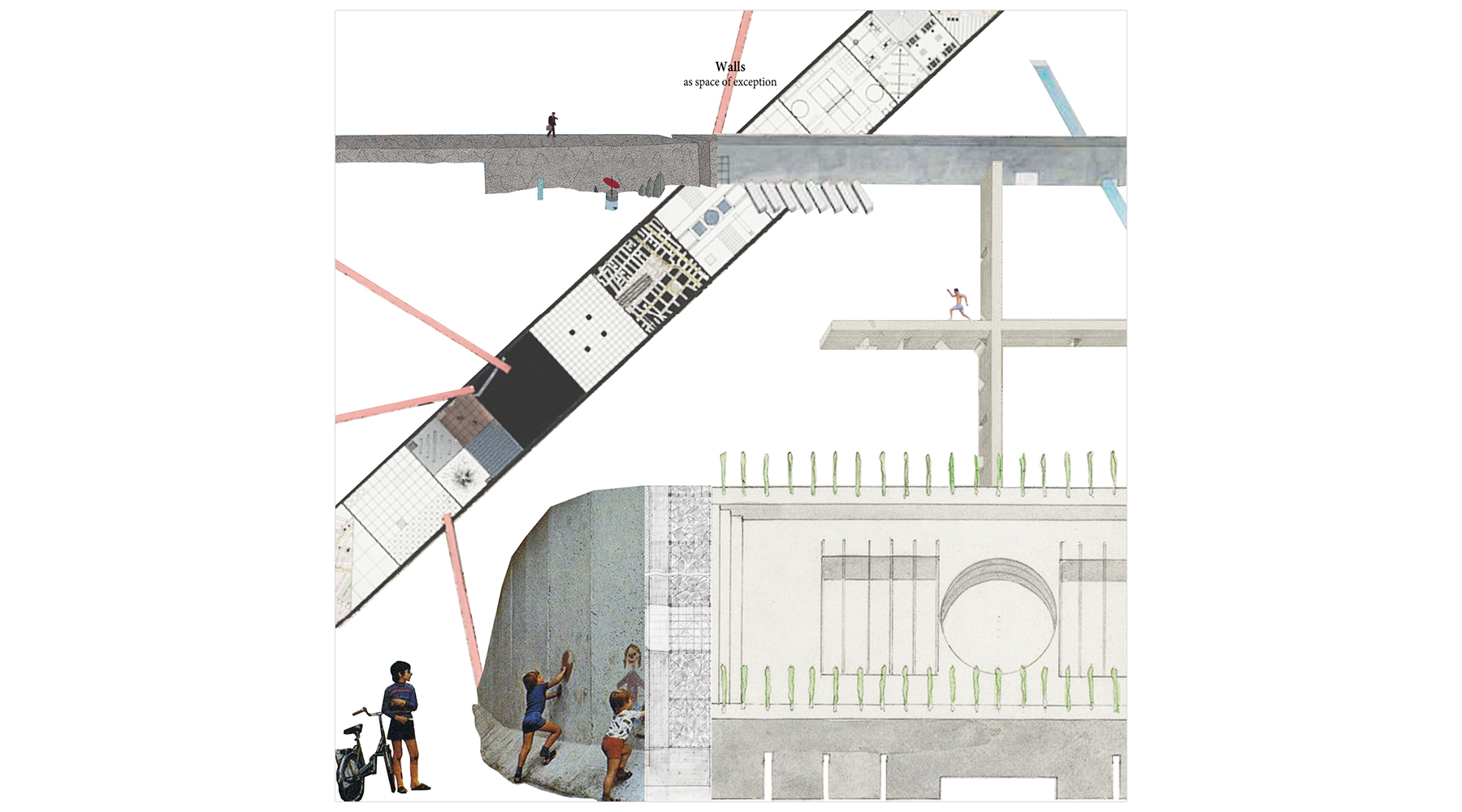
Wall: as an object is not about the separated two worlds on both sides, but what happened on/in the wall itself. (Rem Koolhaas (OMA))
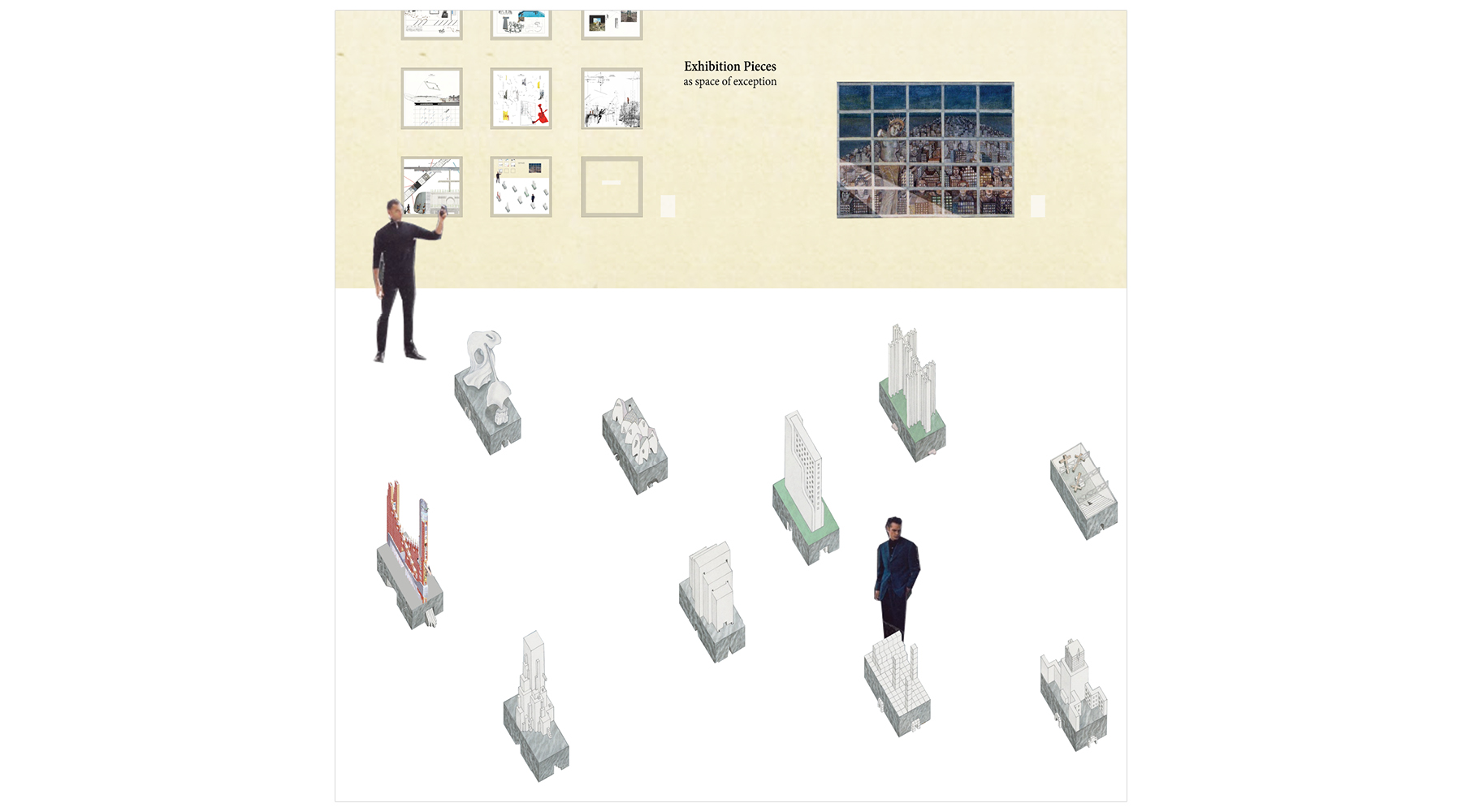
Exhibition pieces: are seen as meaningful and critical just in terms of the staging context. Everything put on the table and focus light could raise the discussions and the possibilities of redefining. (Rem Koolhaas (OMA))
New elements: Digital screen
As digital technology and the internet emerged into the urban environment as well as individual living habitats, the digital screen as the interface connects multiple “spaces” brings a new relationship in terms of the real world and the imagined (fake) world. The term “space as exception” in the screen world is existing naturally as people originally never seeing screens present the normal and common quality of the real environment. Meanwhile, as the screens are mostly incorporated and installed in the real places, there is a mixing result that the world is constructed by the space inside of the screen as well as space where the screens are located. The spaces in the screen are mostly coded and organized to show the designed scene, which like the filming process that juxtapose two different realities one inside the camera and one for the setting.
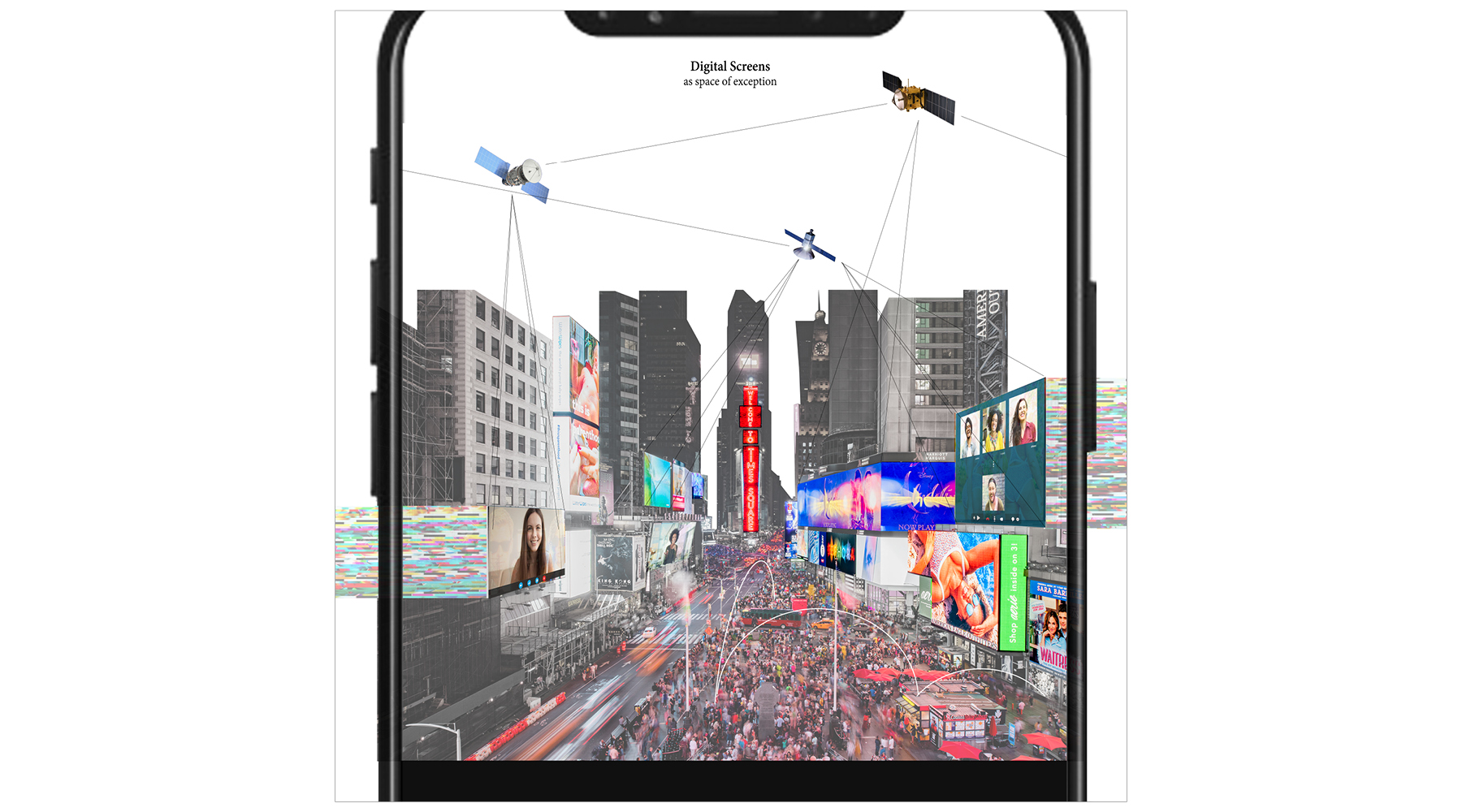
Digital Screen: The combination of physical and digital reality, where space exists without certain order and logic.
Under the control of interface authority, the visible opening zones are juxtaposed with invisible fakeness.
<1> Agamben, Giorgio. State of Exception
(Chicago: Univ. of Chicago Press, n.d), 28.
<2> Ibid, 31.
<3>Rem Koolhaas. “Field Trip. A(A) Memoir (First and Last…)”, Small, Medium, Large, Extra-Large. (New York: Monacelli Press, 1998).
Project Information
Research Instructor: El Hadi Jazairy



